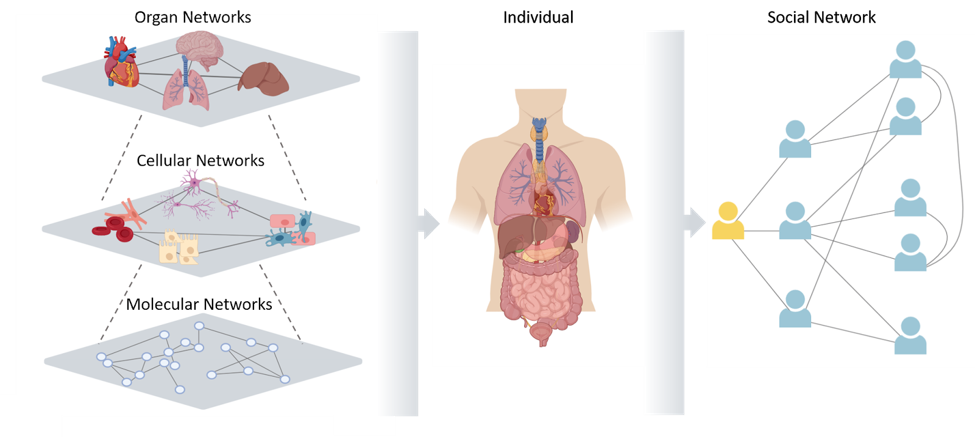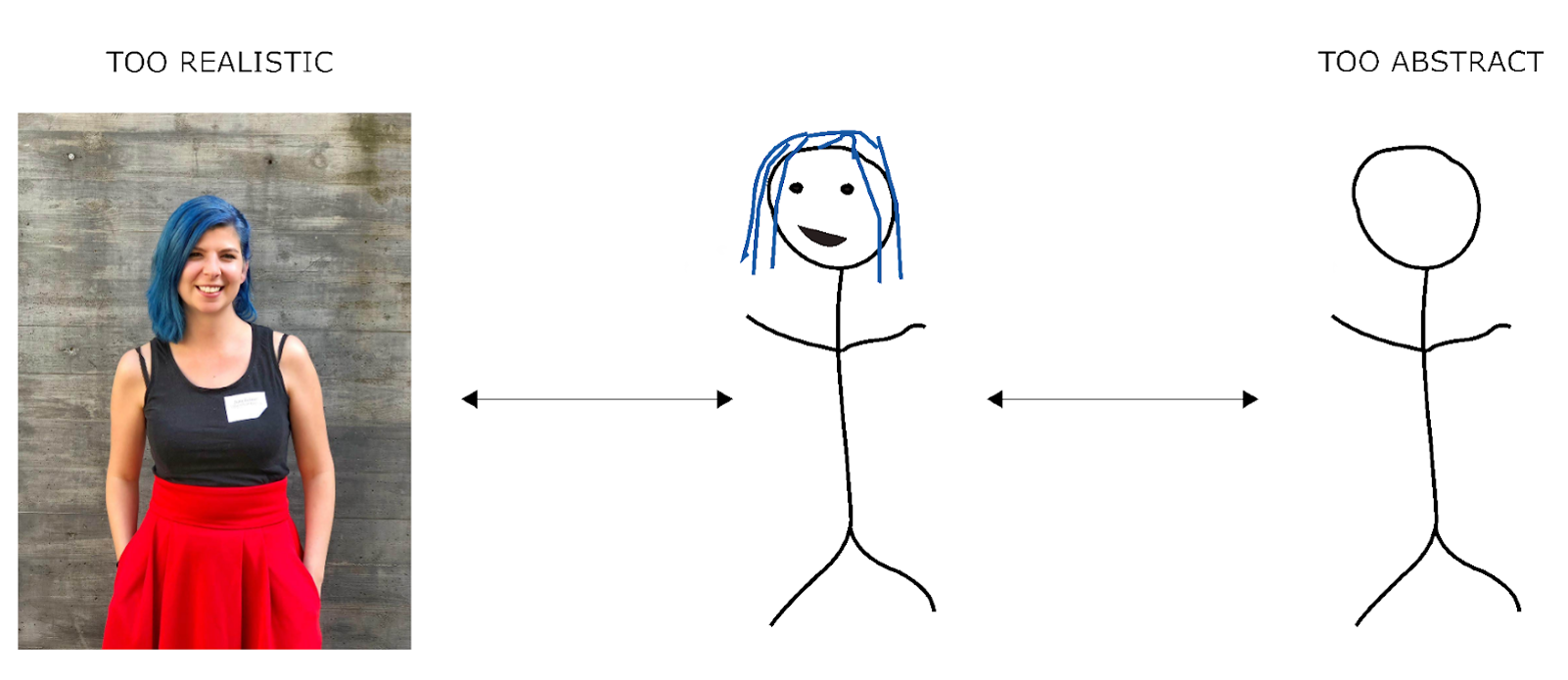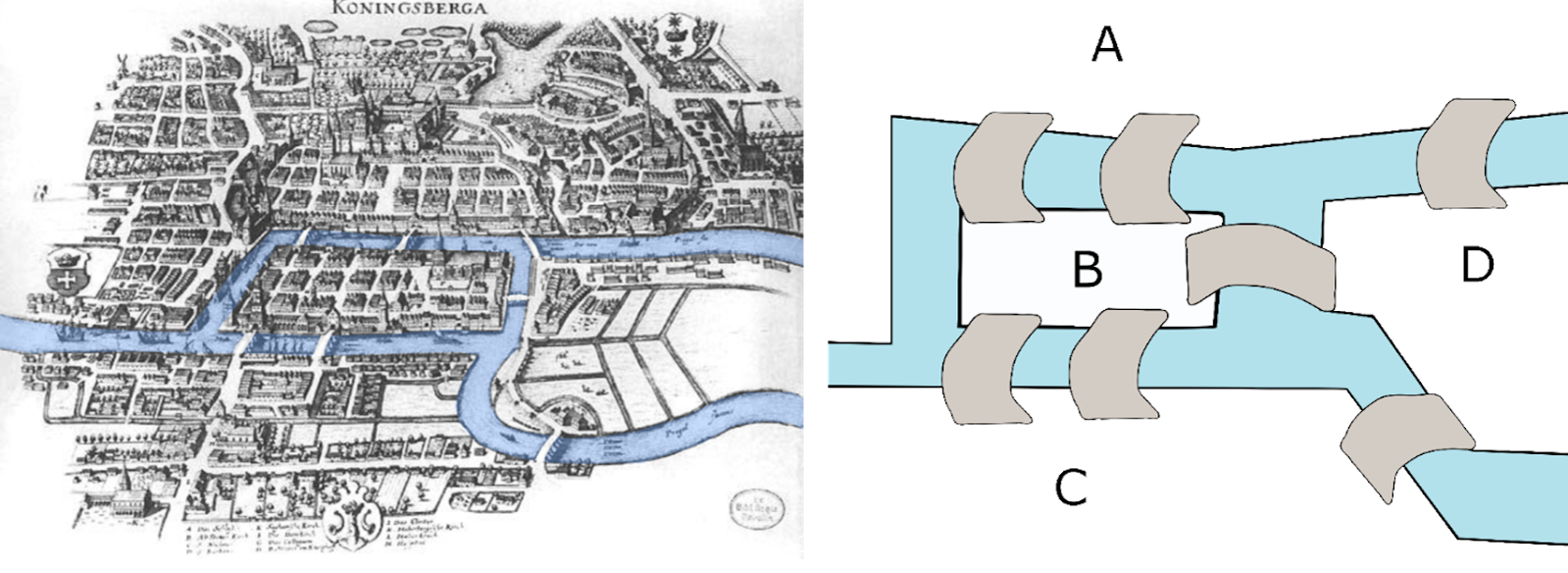|
In this blog we will go through what systems biology means and how we use it in research. Starting with the definition of the terms system, model, followed by an example of network analysis as a systems biology method and the nuanced difference between complex vs complicated. Please ask questions in the comments section if there is anything that you would like explained in more depth! Systems can be considered on different levels. From organ networks to molecular networks, the individual, or even social networks. The image above was adapted from lectures provided by the Systems Biology and Bioinformatics Department Rostock, Germany and a graph from the Institute of Systems Biology Seattle, USA. Systems biology is an interdisciplinary research approach based on the idea of understanding the bigger picture by adding all the pieces of it together. The whole is greater than the sum of its parts. In this aspect systems biology is the opposite of most other scientific disciplines and depends on interdisciplinary collaborations. Biological systems are often represented as networks. Systems can be described in various levels from organism to tissue to cells. Interestingly, the term “Systems Biology” is not well defined. It is a combination of bioinformatics, the use of vast amounts of information, and computational biology, which is everything going beyond bioinformatics. Systems biology is also an umbrella term for some of the approaches used in computational biology. Depending on your research question it may also include additional disciplines. Systems can be considered on different levels. From organ networks to molecular networks, the individual, or even social networks. What is a ModelA major task of a systems biologist is the creation of models. A model is the abstract representation of something, that is abstract enough to be quickly interpreted and realistic enough to maintain meaning. This form of abstraction enables us to integrate data from various disciplines that would usually be impossible to be used in combination. Why we use ModelsIn general models can be used to do the following
Models cannot replace experiments. However, they can complement and support theoretical and experimental studies. A lot of previous knowledge and time is required to construct a sensible model. Inaccurate assumptions can have severe consequences and lead to misleading results. Network AnalysisOnce the model is created, we apply network analysis approaches to identify areas of interest, or areas that have the biggest effect on the entire network. There are several indicators for the importance of a specific area/pathway. Networks consist of nodes and edges. One indicator is the centrality of a node. This can be described by betweenness centrality, which basically stands for the shortest path. Now that is quite abstract. Let’s look at a real-world example: Seven Bridges of Königsberg/Kaliningrad. As you can see below, there are two big islands surrounded by the Pregel (Pregolya) River and two parts of the mainland, divided by the same. What is the fastest route from A to D? In option 1 we need two steps to get form A to D, whereas we only need one step in Option 2. In this case we consider option 2 the better solution. Now, what if the paths are not equal? The next figure shows the same network, but includes the time required to travel between places/nodes. Option 1 still requires two steps, but only 2 minutes in total, whereas option 2 requires 100 minutes. We consider option 1 the better solution. Keep in mind, this is an example of the shortest path. There are many measures that can be used to describe the centrality of a node, the shortest path is just one of them. This is just one example of network analysis and can be used for all sorts of networks, even when it is not about spatial distance, for example in research of how infectious diseases spread and therapeutic target identification. In disease research, we create models of interactions between involved molecules. When trying to find a therapeutic target, we apply network analysis to identify possible targets (i.e. which part has the “biggest” impact - fast and specific) and which known drugs could be used. To be clear: there is a vast variety of measures that can be used to analyze a network. Complicated vs ComplexWe often speak about complex and complicated problems. Usually we use those words pretty much interchangeably. In fact, they are not the same. Depending on what kind of problem we are working with, we need to use the appropriate methods. The problem can be broken down into pieces that can be solved individually. Complicated problems: Can involve various factors, but they are predictable when expertise is available. Complicated systems can be fully understood and modeled. Complex problems: Are based on multiple relationships and interactions, that can change over time. Outcomes are uncertain and models will be more and more inaccurate over time. Modelling complex problems is a challenge and requires the use of specialized tools. These problems cannot be broken down into pieces, but must always be looked at as entire systems. A commonly used real life example for a complicated problem is the construction of a rocket. Once you have all the blueprints and parts you need, you will probably be successful every time. A complex problem is something like raising a child. Your second child is unlikely to turn out exactly like your first child. See below a biological example. Living things are both complicated and complex. Let'ssay you want to model how a caterpillar works, that is complicated. If you want to look at how a caterpillar turns into a butterfly (called metamorphosis), now that is complex! AuthorJulia Scheel is an Early Stage Researcher of iPlacenta. Read her earlier blog post here. Categories All
Sam
3/4/2020 06:05:53 pm
A great read Julia. Loved it!
Reply
Julia
5/4/2020 12:36:31 pm
Thank you :)
Reply
P.A.2
3/4/2020 06:17:49 pm
Great overview. A pleasure to read.
Reply
Julia
5/4/2020 12:37:14 pm
Thanks P.A.2 :)
Reply
Leave a Reply. |
About the blogBeing a PhD student in a European training network is a life-changing adventure. Moving to a new country, carrying out a research project, facing scientific (and cultural) challenges, travelling around Europe and beyond… Those 3 years certainly do bring their part of new - sometimes frightening - but always enriching experiences. Categories
All
Archives
December 2021
|








 RSS Feed
RSS Feed

3/4/2020
4 Comments